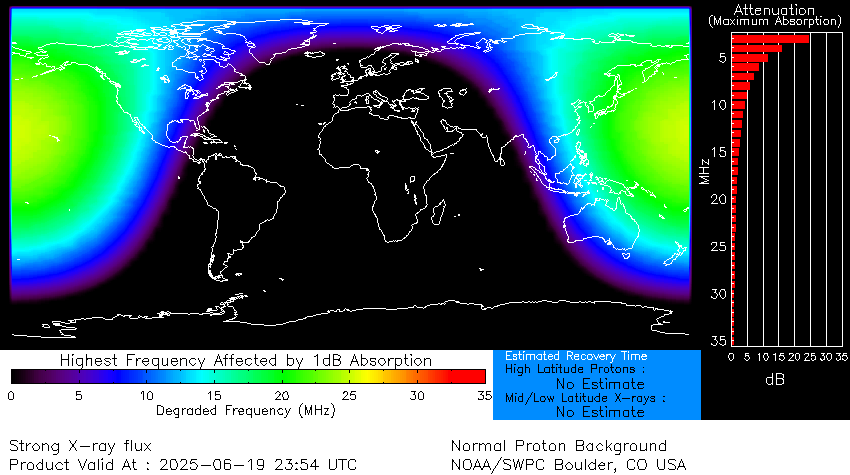Follow us on Google News (click on ☆)
X-class solar flares are the most intense, and this one was no exception. It ionized Earth's upper atmosphere, particularly affecting shortwave radio frequencies. A large portion of the Pacific Ocean was impacted by these disruptions.

Radio blackouts over the Pacific Ocean on June 19.
Credit: NOAA Space Weather Prediction Center
Unlike some solar flares, this one did not eject a coronal mass toward Earth. This means auroras (northern and southern lights) won't be enhanced by this event. However, scientists are closely monitoring this region of the Sun for potential new flares.
Radio disruptions caused by solar flares are a well-known phenomenon. They result from the interaction between X-rays and extreme ultraviolet radiation with Earth's atmosphere. These disruptions can last from a few minutes to several hours, depending on the flare's intensity.
Sunspot 4114 shows intense magnetic activity, the source of several recent flares. Researchers expect it to continue producing flares in the coming days. These events remind us of the importance of space monitoring to anticipate impacts on Earth's technologies.
How do solar flares affect radio communications?
Solar flares release X-rays and extreme ultraviolet radiation that travel at the speed of light. When they reach Earth, this radiation ionizes the upper atmosphere, increasing its electron density.
This ionization alters the propagation of shortwave radio waves, used for long-distance communications. Signals passing through these ionized layers lose energy, which can lead to radio blackouts.
The effects vary depending on the flare's intensity and the radio wave frequency. The lowest frequencies are generally the most affected, with disruptions potentially lasting several hours.
Amateur radio operators and navigation services are among the first to experience these disruptions. Monitoring systems like those from NOAA help anticipate and minimize these impacts.
What is a sunspot and why is it important?
A sunspot is a dark area on the Sun's surface, marked by lower temperature than its surroundings. These regions are the site of intense magnetic fields, often sources of solar flares.
Sunspots follow an approximately 11-year cycle, known as the solar cycle. Their number and activity vary throughout this cycle, influencing overall solar activity.
Sunspot 4114 is particularly active, having produced several X-class flares recently. Its study helps scientists better understand the mechanisms behind these violent phenomena.